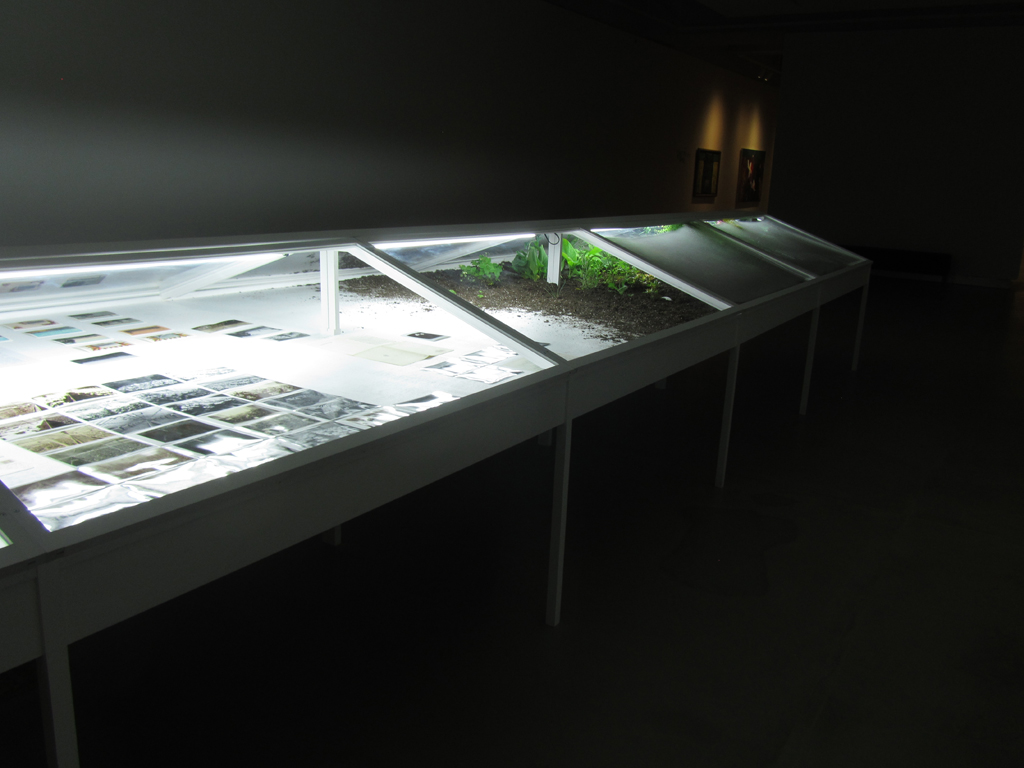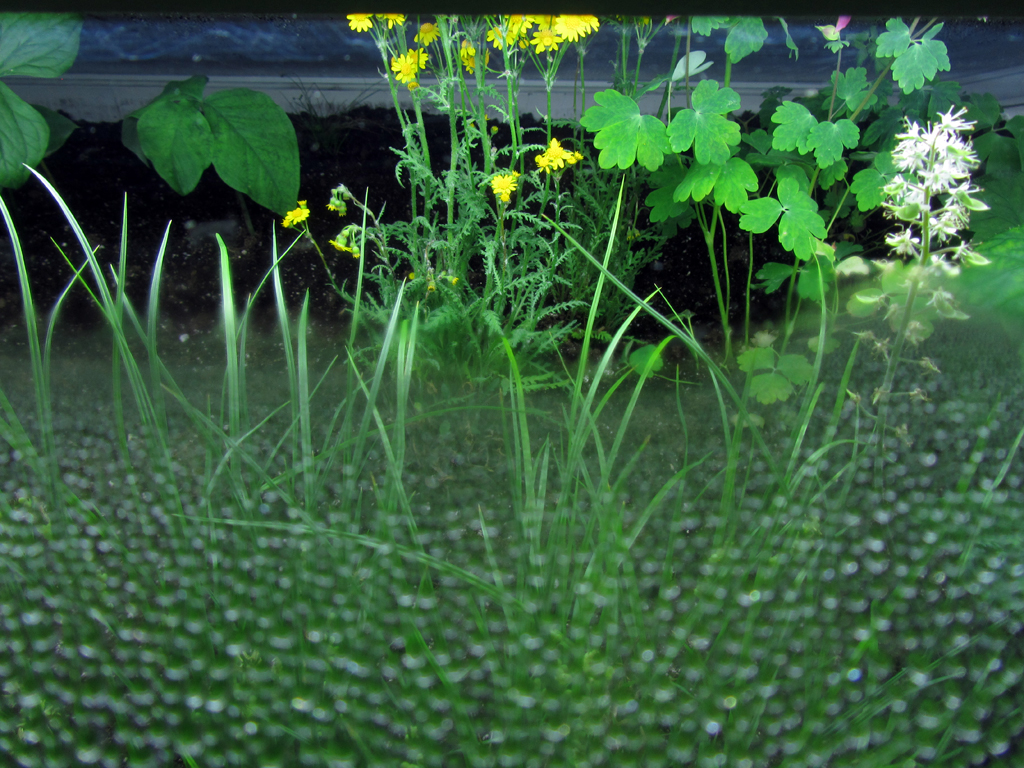

“The sense of space, and in the end, the sense of time, were both powerfully affected. Buildings, landscapes, &c. were exhibited in proportions so vast as the bodily eye is not fitted to conceive. Space swelled, and was amplified to an extent of unutterable infinity. This, however, did not disturb me so much as the vast expansion of time; I sometimes seemed to have lived for 70 or 100 years in one night; nay, sometimes had feelings representative of a millennium passed in that time, or, however, of a duration far beyond the limits of any human experience.”
—Thomas De Quincey, Confessions of an English Opium Eater
While reading Thomas De Quincey’s description of the sublime time-space mind expansion made possible by the ingestion of an exotic psychotropic, I couldn’t help but be reminded that plants occupy a privileged space not only in constructions of a textual imaginary but also in the preservation of history. Through the ages, plants have been an essential agent to transforming our concept of time, extending beyond our individual life spans. An exotic plant captivates De Quincey’s European imagination, releasing it from social constraints, and releasing its creative juices. In the exhibition at hand, Study for a Glasshouse, Abbas Akhavan introduces native plants into a vitrine in order to deterritorialize Dale Estate documents that are reproductions from the PAMA Archives Collection. A colonial discourse underwrites each project. Plants are used to loosen the civilizing forces at stake.
Plants live on a different time scale. Rooted in place, but able to disseminate in seed form, they are slow moving creatures, with the ability to grow rather quickly under ideal conditions. Some trees have been recorded as living up to 4000 years. Many plants have a rhizomatic life form, propagated across a shared root system, holding a shared ‘ageless’ material consciousness. Their temporality is necessarily different to that of humans. When humans began tapping into the nourishing and useful chemical properties of plants, our lives were extended and enhanced—agriculture meant growing plants as food that could be stored for future use, while manipulating plants into clothing meant an ability to live in different geographies and climates, and the production of paper meant the ability to record memory and thought for preservation into the future.
Human intersection with plants is therefore one of radical becoming, and oftentimes heightened experiential intensity, across a lifespan, but also across millennia. Tapping into plants’ secreted potentials can mean opening up unforeseen human potentials. We as humans would never have evolved the way we have without the life-extending properties of plants—their ability to nourish, heal, preserve, and exceed ‘mere’ life. Plants have chemical properties that can provide a sense of expanded time; think of the mind-altering toxins and life-extending elixirs inherent to plants, as well as the extensive properties of their patient, plodding reach (their creeping, wavering movement), which has helped extend our own footprint in space. As a lightweight technology, paper can easily travel, almost as easily as their seeds, propagating genetic material, ideas… In fact, plants have become inseparable from human evolution. This extends into the destructive potential of colonial expansion. The contamination of the “native” by “colonial” thought and species is a cultural phenomenon that has radically altered the world. A violence that spreads through the prosthesis of lumbering wooden ships, carrying foreign seeds and species, and hence new agricultural traditions abroad.
Colonists spread their culture to the New World in the form of ideas and invasive species. Roses were understood to be civilized and beautiful, and increasingly commodifiable. One could buy, rather than cultivate, that instant aura of civilization and good taste permeating the home. This cultivation was made possible due to industrial energy provided by coal and oil. An intricate network of tunnels and pipelines heated the greenhouses, and smoke escaped the complex through a 91-metre chimney, which dominated the Brampton landscape. It is important to remember that oil and coal are ancient plant matter transformed into intensified energy potential over millions of years.
Their slow natural production is quickly burned into quick profits and instant pleasure, beyond the time and space of life’s natural rhythms. To extend the industry beyond the immediate territory, a “special spur line” was built to link the greenhouse complex of the Dale Estate “to the Canadian Pacific [railway]… to deliver coal… in all seasons.” In turn the railway connected Brampton’s greenhouses to Toronto, such that by 1956 the Dale Estate greenhouses were “responsible for half of provincial production” of fresh cut flowers.
– I imagine Study for a Glasshouse as the artist has explained it to me. In a long vitrine he will place photos of rows and rows of greenhouses. Hand-written speeches about the role of flowers in society. Photos of the Duke and Duchess of York’s royal visit to the factory. I imagine the list of endless Victorian names given to new strains of roses. On one leaf from each rose is branded the factory name, Dale, using a perforation device. With the autographed rose, nature and culture join to reproduce their ultimate capitalist-colonial progeny. About two-thirds of the way across the vitrine, one begins to find traces of soil and sprouting verdant matter, which becomes increasingly dense as one reaches the far end. Grasses, mosses, and wild flowers sprout from the soil, and by the end of the exhibition’s term, wildly proliferate. Condensation accumulates inside the hermetically sealed cabinet. One is witness to a “native invasion” of a collection of domestic-industrial archival material. One follows the estate’s rise to power, from its early burgeoning through industrial experimentation—accelerating growth and maximizing yield, while searching for the most beautiful strains of botanic life forms through hybridizing techniques—all the way to its decline, stemming from the transformation of the economy, national to global, industrial to informatic/biotechnical.
But what difference does Akhavan’s artistic intervention of native flora species make to the Dale Estate’s history? Abbas Akhavan’s Study for a Glasshouse has tapped into what Jacques Derrida has described as an unconscious death drive underlying every archive, but also to its unintended potential thanks to the human ability to insert new meaning in the uncovering of past violences that demand new textual interpretation: “[T]here is no political power without control of the archive, if not memory. Effective democratization can always be measured by this essential criterion: the participation in and access to the archive, its constitution, and its interpretation.” The archive is not only a repository of historical memory and artifacts for preservation and future knowledge acquisition. It captures a past violence—authority captured through foundational naming, territorialization, planting roots, the laying down of laws and rules of conduct, and documentation of exchange.
Every archive could be understood as the institution of a firmly planted assemblage that surreptitiously silences other positions. The institution of memory also requires forgetting. Preservation also requires destruction. An enforcement of what is deemed worthy versus what is deemed undeserving of preservation and memorialization.
Hoary vervain, Solomon’s seal, wild bergamot, wild columbine and geranium, woodland sunflower and dogwood. Contrast these to the Canada Queen, Lady Canada, Lady Willingdon, Rosedale, Dorothy Dale, and Sunbeam. The first list of names represent plants native to the Brampton area. The second list represents the names of roses cultivated at the Dale Estate greenhouses for over a century using industrial flower production methods. Industrial capitalist production as we know it went hand in hand with the colonizing project. Profit at the expense of the weaker position. The drive to grow strong strains and stocks. The compulsion to repeat this violence across the continent could be understood as a will to defy death. And an inability to deal with it.
Capitalism is a repetition compulsion, a will to power, to progress, to human expansion, against the inevitability of death. But it is an ideologically compromised position that privileges preservation of one conception of life while reaping death for all others. Earlier I proposed that the archive had something to do with the death drive. One side of the death drive is external aggression, the compulsion toward propagating civilization/cultivation, which stymies and even kills off other forms of life. To be buried secretly, ever so sweetly, under a bed of roses. This is counter to the state of quiescence that characterizes the internalized death instinct. Trauma can be at the root of this internalized form. The desire to choke the rumbling engines of progress through the introduction of the quiet creep of plant life. This is perhaps the phantasy that Akhavan lays out for our eyes. It is perhaps a way of paying respect to the stifled voices and suffering lives that are at the foundation of industry, civilization, and archives; it lays bare the colonial violence that quietly unfolds across reams of mulched plant life and coal dust, ink on paper.
Bibiolography
“Dale Estate,” http://www.heritagetrust.on.ca/CorporateSite/media/oht/PDFs/Dale– Estate-ENG.pdf
Jacques Derrida, “Archive Fever: A Freudian Impression,” Diacritics vol 25, no. 2,Summer 1995, p. 11
Thomas De Quincey, Confessions of an English Opium Eater, edited by Alethea Hayter, New York, Penguin Books, 1971, pp. 103–4.

